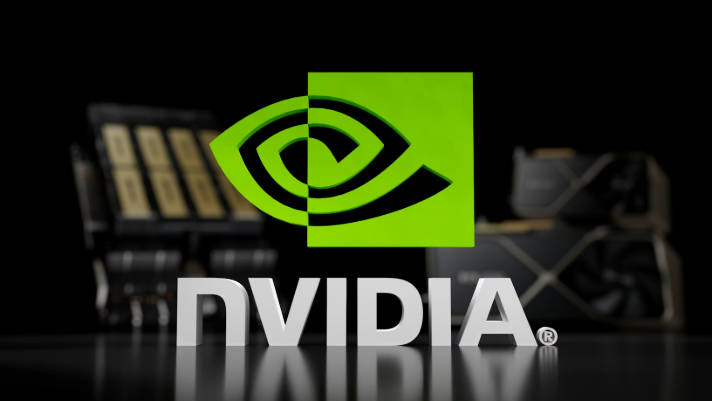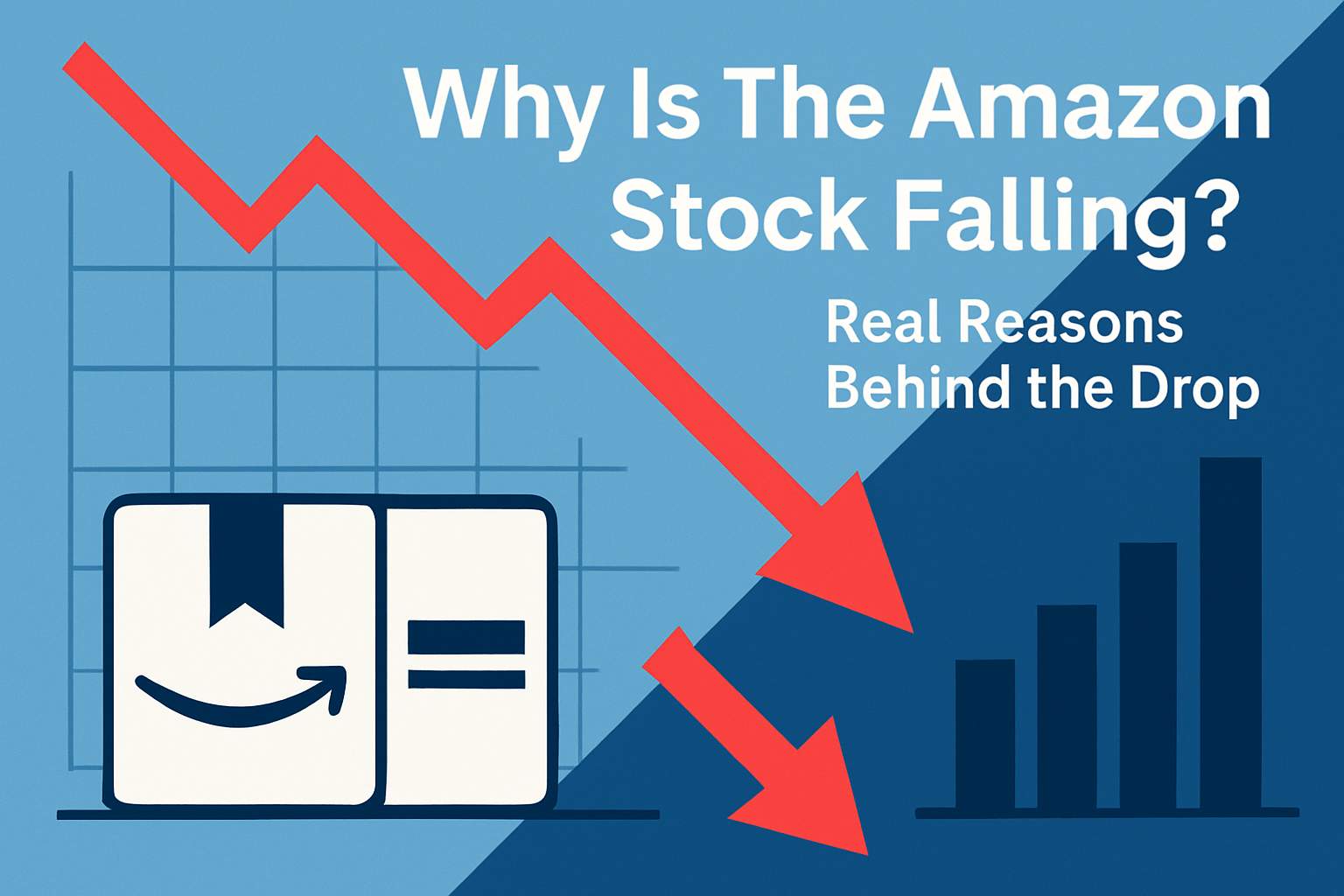Nvidia has just delivered another set of record numbers, yet the share price is moving the other way. As of late November 2025, NVDA trades around 177-178 dollars, down sharply from its recent all-time high near 212 dollars set in late October.
Key data points show:
Current price: 177.82 USD
Daily change: down 2.59%
Weekly change: down 3.82%
Monthly change: down 7.14%
For a company long at the centre of the global artificial-intelligence hardware boom, these declines are notable. Investors are asking whether this pullback is temporary or signals the start of a deeper correction.
The short answer is: these declines come after years of strong gains, reflecting Nvidia's dominance in AI hardware. While the stock remains above its long-term average, the multi-timeframe weakness suggests selling pressure is building.
Why is Nvidia stock dropping right now?

Nvidia's business is still very strong, but its stock was priced for perfection. After record Q3 results and fresh AI headlines, investors are waking up to three main risks:
stretched valuation after a huge run
rising competition and in-house AI chips from major cloud and social platforms
a short-term technical downtrend after breaking key support levels
Nvidia reported Q3 FY2026 revenue of 57 billion dollars, up 62% year on year and ahead of expectations, with guidance for about 65 billion dollars in Q4.
Yet NVDA fell after earnings and has kept sliding as headlines about big clients exploring alternative AI chips weighed on sentiment.
At the same time, U.S. tech valuations in general look rich versus earnings, which makes investors quicker to sell when there is any hint of risk or new competition.
Main drivers of the recent Nvidia stock drop:
Record earnings but expectations were even higher, leading to profit-taking
Fears that large customers will shift some AI spending to their own or Google’s chips
Talk of an "AI bubble" and worries about over-building data centers
NVDA breaking below short-term moving averages and slipping into a descending channel
Recent performance of Nvidia: 1 week, 1 month, 6 months
Before looking at the reasons, it helps to see where Nvidia stock actually stands.
Nvidia - last week
Over the last week of trading, NVDA has drifted lower from around 181 dollars to about 178 dollars, a decline of roughly 2%, with large intraday swings on AI news and broader tech moves.

Reports that a major social media and metaverse group may spend billions on non-Nvidia AI chips hit the stock particularly hard, with one day's drop alone reaching more than 6%. Volatility has stayed high as traders react to every new AI headline.
Nvidia – last 1 month
Over the past month, the picture is tougher. NVDA is roughly 12–16% below its late-October peak near 212 dollars, marking its worst monthly pullback since 2022.

The trend on the daily chart has turned into a clean descending channel, with lower highs and lower lows. Price has slipped below the 20-day and 50-day moving averages, a clear sign of short-term weakness for many technical traders.
Nvidia - last 6 months
Step back, and the story changes. On a six-month view, Nvidia is still up around 30%, rising from mid-May levels near 135 dollars to the high-170s now, even after the recent NVDA stock drop.
 So the current Nvidia stock decline is best seen as a correction from very elevated levels within a longer-term uptrend, not a collapse in the underlying business.
So the current Nvidia stock decline is best seen as a correction from very elevated levels within a longer-term uptrend, not a collapse in the underlying business.
What Triggered the Recent Drop of Nvidia
A combination of factors is exerting downward pressure on the share price. Each of these influences is individually manageable, but their convergence has created a sustained cooling in sentiment.
1. Rising Competitive Pressures — Google TPUs

A major new factor is Google's Tensor Processing Units (TPUs), which are now being offered to third-party clients, including large AI customers like Meta. Key points:
TPUs were previously internal-only but are now available to external customers.
Major AI players may adopt TPUs as early as 2026–2027. potentially reducing Nvidia GPU demand.
TPUs are highly efficient for tensor-heavy workloads, offering cost and performance advantages.
The move reduces vendor lock-in, weakening Nvidia's previously assumed dominance.
This development has materially reshaped investor expectations, as a portion of future AI workloads may no longer rely solely on Nvidia hardware.
2. A Classic Case of Profit-Taking After a Historic Rally
Nvidia's rise has been so strong that many institutional investors have seen fit to lock in gains.
This is a logical process given:
stretched valuations in 2024–2025
the market's rotation into cyclicals, financials, and defensive sectors
elevated portfolio concentration in technology names
When profit-taking begins in a heavyweight stock, the impact cascades across indices.
3. High Sensitivity to Negative Headlines
Nvidia's valuation has been built upon extraordinary growth expectations. Any headline that implies customer migration, production bottlenecks, regulatory scrutiny or macro slowdowns tends to provoke outsized reactions.
Even news that does not materially harm revenue forecasts can weaken short-term sentiment if it raises questions about the durability of Nvidia's leadership.
4. Market Volatility and Macro Uncertainty
Broader market conditions have also influenced the decline. Shifts in interest-rate expectations, geopolitical tensions and fluctuating risk appetite in global equities have created volatility that disproportionately affects high-growth stocks.
Nvidia's Fundamental Strength: Why the Business Itself Remains Robust

It is important to distinguish between market sentiment and operational performance.
Nvidia's underlying fundamentals remain some of the strongest in the global technology sector. Key pillars include:
1. Dominance in AI and High-Performance Computing
Nvidia's GPUs continue to set the benchmark for artificial-intelligence training and inference workloads. Their advantages include:
superior compute density
strong developer ecosystem
CUDA software lock-in
long-standing customer relationships
revenue concentration in high-margin enterprise segments
2. Record Data-Centre Revenue
Data-centre sales (the core driver of the AI-hardware boom) have grown dramatically and now represent the vast majority of total revenue.
Despite the share-price decline, there is no material sign that large cloud customers have slowed their immediate procurement of Nvidia accelerators.
3. Expanding Software, Networking and Platform Revenue
Growth is no longer limited to GPUs. Nvidia is increasingly a full-stack solutions provider, offering networking products, AI frameworks, enterprise software subscriptions and system-level integrations.
These expansions reinforce long-term profitability and reduce reliance on any single product.
4.Strong Forward-Guidance Prior to the Sell-Off
Recent earnings guidance indicated continued strength in AI-related demand.
This demonstrates that management still sees broad and durable demand across cloud and enterprise segments.
Valuation Landscape: Does Nvidia Still Justify Its Premium?
One of the core debates surrounding Nvidia is whether the valuation adequately reflects both current growth and future risks.
1. Premium Valuation Remains the Norm
Nvidia trades at a valuation that embeds extremely strong future demand expectations. In periods of market optimism, such premiums are justified by:
consistent revenue beats
accelerating AI adoption
new product cycles
However, high valuations are inherently vulnerable during risk-off phases.
2. Analysts Still Expect Upside
Despite recent declines, many analysts maintain targets that sit well above current market levels.
The divergence between price and consensus estimates indicates that professional sentiment is not materially bearish, but market participants are temporarily cautious.
3. The Market Is Pricing Uncertainty, Not Failure
The current decline should be interpreted as a pricing of uncertainty rather than a rejection of Nvidia's long-term prospects.
The valuation compression often reflects:
This means the drop is more about risk adjustment than a change in structural fundamentals.
Technical view: key levels traders are watching on Nvidia
On the daily chart, Nvidia is in a short-term downtrend inside a broader long-term uptrend. Momentum has cooled from overbought levels, but the stock is not deeply oversold yet.
1. Current trend and momentum
Here is a simplified technical snapshot based on recent daily data:
| Indicator |
Latest value (approx.) |
What it suggests for NVDA now |
| RSI (14) |
~41–46 |
Momentum has cooled from overbought; neutral to mildly oversold. |
| MACD (12,26,9) |
about -2.0 |
Bearish crossover, shows short-term downside momentum. |
| Stochastic (20,3) |
~19 |
In or near oversold zone, often where bounces can start. |
| 20-day SMA |
~191–192 USD |
Price below this line, confirming short-term corrective phase. |
| 50-day SMA |
~186–187 USD |
Price also below, signaling medium-term weakness. |
| 200-day SMA |
~153 USD |
Long-term uptrend still intact while price holds above here. |
| Bollinger Bands (20,2) |
Lower band ~173 USD |
NVDA is now trading close to the lower band, a classic pullback. |
| ATR (14) |
~8-9 USD |
Daily swings of around 4–5%, high but not extreme volatility. |
| ADX (trend strength) |
mid-teens to low-20s |
The trend is present but not very strong yet. |
Values differ slightly by source, but they all point to the same message: NVDA is in a controlled pullback, not a full-blown breakdown.
2. Important support and resistance zones
Key areas many traders are watching:
Immediate support: 173–178 dollars
Around the recent lows and near the lower Bollinger band / short-term demand zone
Stronger support: 160–165 dollars
Rough area of prior consolidations and a step above the 200-day average
Major long-term support: 145–155 dollars
Close to the 200-day moving average and early-summer base levels
Near-term resistance: 186–192 dollars
Cluster of the 20-day and 50-day moving averages and recent breakdown zone
Major resistance: 205–212 dollars
Psychological 200 level and the recent all-time high zone
Will the Down-Trend of Nvidia Continue?
The direction from here depends on the interplay between sentiment, competition and Nvidia's execution.
Scenario A: The Down-Trend Continues
This is likely if:
major customers adopt rival accelerators in a meaningful way
valuations compress further due to interest-rate concerns
the company issues more conservative guidance
macro weakness triggers selling across technology sectors
If these conditions persist, Nvidia may break below its current support and enter a deeper correction phase.
Scenario B: Consolidation Followed by Rebound
This outcome becomes probable if:
earnings continue to surpass expectations
concerns about customer diversification prove overstated
Nvidia strengthens its software and ecosystem moat
market sentiment stabilises around technology names
In this case, the current decline would be a healthy reset before continued long-term appreciation.
What Investors Should Monitor Next

To understand whether the down-trend will extend or fade, focus on:
1. Customer Procurement News
Any confirmation that cloud providers are reducing Nvidia GPU orders would weigh on sentiment.
2. Competitor Product Announcements
Rivals such as AMD, Google, and custom ASIC vendors will influence market perception of future share.
3. Forward-Looking Statements from Management
Guidance revisions, commentary about supply and demand balance, and ecosystem developments will matter more than the current quarter's numbers.
4. Long-Term Technical Levels
Watch the 170 USD region and the 200-day moving average closely.
How traders can trade Nvidia with EBC Financial Group

For active traders, Nvidia remains one of the most closely watched names in global markets. With EBC Financial Group, NVDA can be traded alongside major indices, currencies, commodities and stock CFDs, allowing traders to express a full AI and tech view in one place.
With EBC Financial Group, traders can:
Trade Nvidia stock CFDs as part of broader AI or tech strategies
Monitor key support and resistance levels on multi-timeframe charts
Use stop-loss and take-profit orders to manage risk on volatile moves
Access regular market analysis and education focused on practical trading setups
Trading leveraged products involves a high level of risk and may not be suitable for everyone. You can lose more than your initial investment. Always consider your objectives and risk tolerance, and seek independent advice if needed.
Frequently Asked Questions
1. Why has Nvidia's share price been falling recently?
Nvidia's share price has declined due to competitive pressure, profit-taking after a strong rally, and heightened sensitivity to negative headlines. These factors combined with broader market volatility have led to short-term selling across high-growth technology stocks.
2. Does the recent decline suggest Nvidia's fundamentals are weakening?
No. Nvidia's fundamentals remain strong, especially in data-centre revenue and AI infrastructure leadership. The decline reflects changing sentiment and rising uncertainty, rather than deterioration in the company's operational performance or long-term competitive position.
3. Could competitors like Google, AMD or custom AI chips threaten Nvidia?
Competitors are gaining attention, particularly as major customers explore alternative accelerators. However, Nvidia's software ecosystem, mature hardware stack and long-standing relationships still give it a significant advantage. The risk is real but not yet structurally damaging.
4. Is the current pullback a buying opportunity for long-term investors?
It could be, depending on risk tolerance. Long-term investors may view the decline as a temporary correction within a strong structural up-trend. However, elevated valuations and competitive uncertainty mean careful position sizing and patience remain important.
5. What price levels should traders watch in the coming weeks?
Key support lies around the high-160s to low-170s range, while major resistance appears near the 200–212 region. A decisive move above or below these zones could indicate whether the trend will resume upward or continue downward.
Conclusion
Nvidia's current stock slide reflects a reset in expectations, not a collapse in its core business. The company is still growing revenue and earnings at a remarkable pace, but the market is re-pricing the risks around competition, AI spending cycles and high valuations.
Price moves in a name like NVDA come from three forces working together: fundamentals, sentiment and technicals. Right now, the first remains strong, while the other two are in a corrective phase.
For some traders, that signals caution; for others, it may present opportunity around clear levels and time horizons.
If you are considering trading Nvidia or other major stocks, make sure you understand the risks, use sensible risk management, and work with a regulated broker such as EBC Financial Group.
Disclaimer: This material is for general information purposes only and is not intended as (and should not be considered to be) financial, investment or other advice on which reliance should be placed. No opinion given in the material constitutes a recommendation by EBC or the author that any particular investment, security, transaction or investment strategy is suitable for any specific person.








 So the current Nvidia stock decline is best seen as a correction from very elevated levels within a longer-term uptrend, not a collapse in the underlying business.
So the current Nvidia stock decline is best seen as a correction from very elevated levels within a longer-term uptrend, not a collapse in the underlying business.























